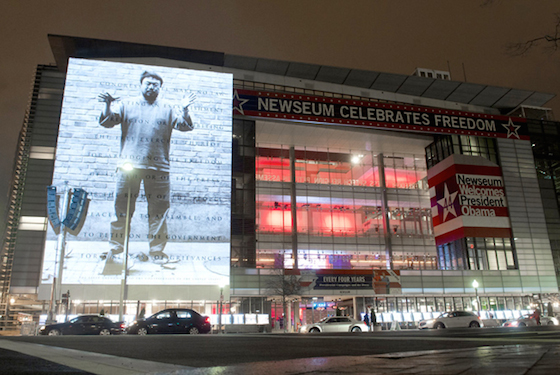
The work featured in the Newseum projection is a photographic triptych documenting Ai’s destruction of a piece of pottery that was deemed valuable because it was made roughly 2,000 years ago. The piece raised issues about cultural values as well as iconoclasm and artistic tradition. Some of his other works of art have explored the aftermath of the deadly 2008 Sichuan province earthquake and governmental censorship in China.
A celebrated artist recognized for his collaboration with architects Herzog & de Meuron on the design for the “Bird’s Nest” stadium at the 2008 Olympic Games in Beijing, Ai is known for his political activism, which he often accomplishes through his art and through his embrace of the Internet and social media.
